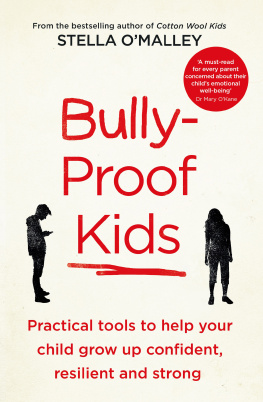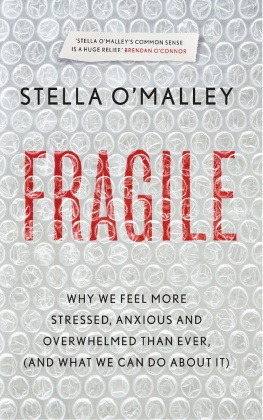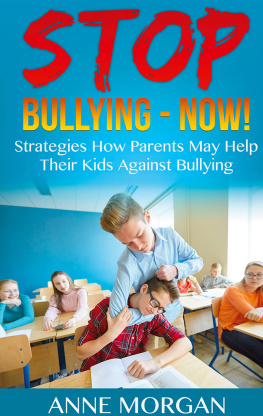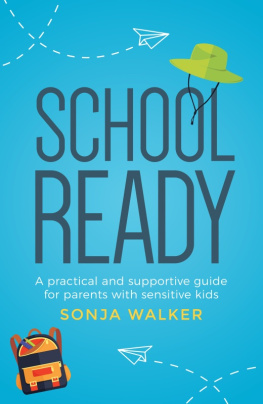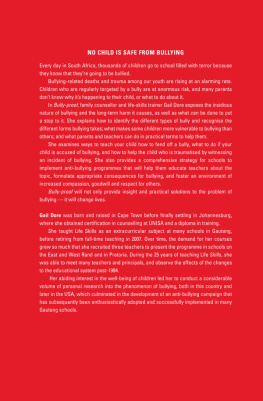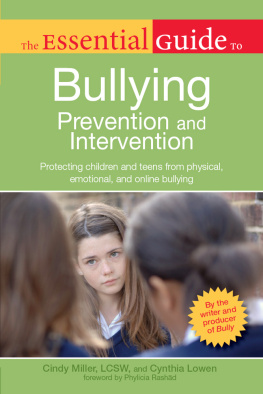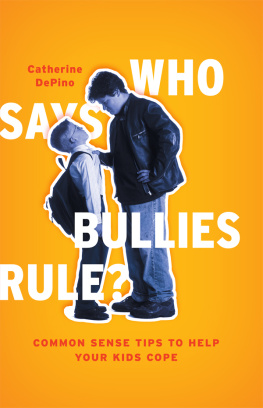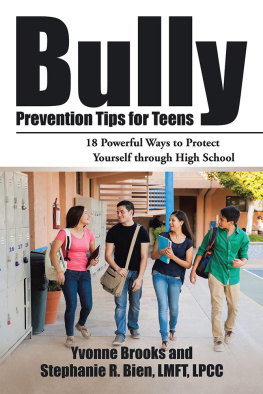Contents
Guide
Stella OMalley is a psychotherapist, writer and public speaker with many years experience as a mental health professional. Much of Stellas counselling and teaching work is with parents and young people. She is the author of the bestselling book Cotton Wool Kids.

SWIFT PRESS
First published in Great Britain by Swift Press 2022
First published in Ireland by Gill Books 2017
Copyright Stella OMalley 2017
The right of Stella OMalley to be identified as the Author of this Work has been asserted in accordance with the Copyright, Designs and Patents Act 1988
Designed by Sofra Murphy
Edited by Sheila Armstrong
A CIP catalogue record for this book is available from the British Library
ISBN: 9781800750616
eISBN: 9781800750623
Acknowledgements
I am often perplexed and unsure how to react when my friends and family assume that my work as a psychotherapist is draining or debilitating in some way. In fact, its quite the opposite. My work has so far always been energy-giving and inspiring as the clients I work with are sensitive and generous enough to seek help and then willing to face the obstacles that invariably appear along the way. This book wouldnt have happened if not for the clients that I have been lucky enough to meet and Id like to take this opportunity to give them my heartfelt thanks.
The book wouldnt have crossed over the line without the discernment and engagement of Sarah Liddy, so thanks for that. Im also thankful to Sheila Armstrong, Teresa Daly and to everyone at Gill Books for their clear-minded judgement calls.
To my lovely Henry and darling kids, Risn and Muiris, thanks again for your forbearance and patience about the book. Thanks too to the fabulous author Nuala OConnor who is so kind in steering me the right way in the world of publishing, to Katherine Lynch for her kind generosity and to my pal, therapist and confidante Fiona Hoban for her insight and sincere encouragement. Finally, infinite thanks and love to my Mam, my family and my friends.
Dont shrink.
Dont puff up.
Just stand your sacred ground.
Bren Brown
Contents
For my darling kiddos, Risn & Muiris
Introduction
Every day children in schools all around the world eat their lunch in toilet cubicles; others spend entire mornings in class silently agonising about who might hang out with them at lunchtime; millions immediately panic when they hear the familiar ping from their mobile and they realise that yet another so-called friend has posted spiteful venom about them on social media.
As a psychotherapist, I felt compelled to write this book in response to the sheer number of people who come to me whose lives have been blighted by bullying. Parents come to me because they are devastated that their children are being bullied. Kids who are being bullied also come to me and the bewildered pain that often characterises the initial sessions is harrowing. Not only that, but I also often work with children who find the social aspect of their lives difficult the kids who are hanging on the edges of the group. These kids feel they dont quite fit in and they arent even sure they want to but they live in a world obsessed with popularity, with sociability and with counting likes on their social media.
It is estimated that approximately 1015% of any given group of children repeatedly bully others while approximately 1015% of children are repeatedly targeted by bullies. Although physical bullying decreases with age, on the other hand verbal, social and cyberbullying peaks between the ages of 10 and 15. Thankfully, as teenagers grow older they bully less and usually by the time they leave school the prevalence of bullying is significantly reduced.
Although girls are more likely to use social bullying as a way to wield power over another while boys tend to use physical violence more often, it doesnt really matter whether the bullying is physical, social, emotional or cyber bullying reaches deep into a persons psyche and shatters the sense of self. Girls might be subtler using gossip and exclusion while boys are more obvious and yet boys tend to bully more often and they keep at it longer. The child who has been bullied often feels deep down that they have been viewed, judged and then stamped as not good enough and their trust in other peoples goodness is destroyed. The thing about bullying is that the humiliation and shame is almost overwhelming. Each little kid who has been bullied thinks that this is their individual failure and they usually blame themselves. They may feel relieved and even vindicated 20 years later when they discover that it wasn't their fault, nor were they alone in their experience, but the anguish of being abandoned and humiliated by their peers at a crucial stage of development often leaves many long-term scars.
Within the counselling context, I often meet many children whose disdainful attitude towards the loners and freaks in their social domain is downright disturbing. When I challenge these otherwise considerate and kind kids, they tend to look bemused, shrug their shoulders and mindlessly dismiss the pain of their peers. Other bystanders wring their hands in concern but tend not to do anything that will actually help the target. Schools, usually more focused on childrens education than their emotional well-being, tend to hope the exclusion or the bullying might be a molehill rather than a mountain and so they tend to underplay any bullying. The target is often so humiliated by the experience that they prefer to keep their head down and wish it all away. This is another reason why I wrote this book and the dismissive dehumanisation of other peoples pain is one of the many issues involving bullying that I became determined to address.
The good news is that bullying can be combated. The bad news is that not enough people are educated about how to do this. This book intends to ensure that readers are fully equipped to handle any bullying that comes their way no matter what their role is.
I work in a private practice in the midlands in Ireland and of the three second-level schools in the area, one of the schools appears to handle bullying very effectively, another does reasonably well, while the third school encounters bullying on an almost continuous basis. This is remarkable to me as the kids are all from mostly similar backgrounds. The difference is that this school minimises any bullying incidents or pretends that there is no bullying taking place, while the other two schools are, to a greater or lesser extent, willing to address the problem and take the necessary steps to deal with it.
This book explores the dark world of bullying and examines how and why some approaches are more successful than others. In this book, readers will learn about strategies that will combat bullying and exclusion. The reasons why people bully, why some personalities try to gain power over their peers, why some people are targeted more than others and why bystanders dont intervene are all examined. Different approaches are outlined so that targets can recover from their experiences and be able to move forward with confidence, self-awareness and self-acceptance.

